Bioinformatics, Phylogeny and Evolutionary Genomics Group
Members
Maîtresse de conférences
UCBL
Tel: 04 72 44 84 87

Professeure des universités
UCBL
Tel: 33 04 26 23 44 76
Doctorante
UCBL
Enseignant-chercheur CPJ
UCBL
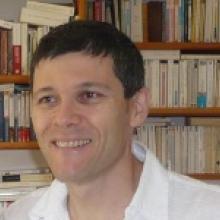
Directeur de recherche
CNRS
Tel: 33 04 72 44 62 97
Doctorant
CNRS
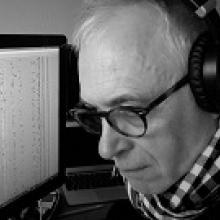
Professeur d'université émérite
UCBL
Tel: 04 72 44 85 60
Ingénieur d'études CDD
CNRS
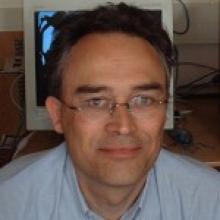
Directeur de recherche
CNRS
Tel: 33 04 72 43 11 67
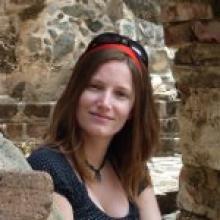
Maîtresse de conférences
UCBL
Tel: 33 04 72 43 29 18
Doctorante
UCBL
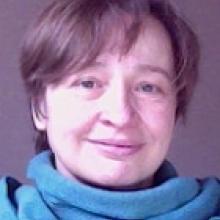
Chargée de recherche
CNRS
Tel: 33 04 72 44 85 60
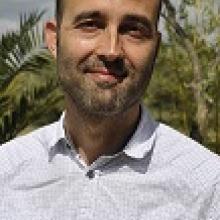
Directeur de recherche
CNRS
Tel: 04 72 44 84 87

Chargée de recherche
CNRS
Tel: 04 72 43 13 44

Directeur de recherche
CNRS

Maître de conférences
UCBL
Tel: 04 72 43 35 83
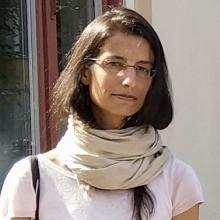
Chargée de recherche
CNRS
Tel: 04 72 44 81 42
Doctorant
CNRS

Directeur de recherche
CNRS
Tel: 33 04 72 44 62 96

Chargée de recherche
CNRS
Tel: 04 72 43 26 28
Doctorant
UCBL
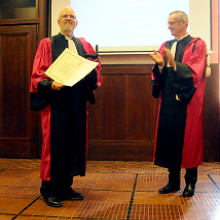
Chercheur invité
UCBL
Our group focuses on two main axes: phylogenomics (i.e. the inference of evolutionary history based on genomics data) and evolutionary genomics (understanding the molecular and population processes that drive genome evolution). We see genomes both as a subject of research (how do genomes evolve, why are they structured the way they are?), but also as a main source of empirical knowledge about the macroevolutionary patterns (what do they tell us about the history of life on Earth?), or about the phenotypes and life-history strategies of organisms. Our works heavily rely on methodological developments (bioinformatics, modeling and statistical inference).
Evolution of genome architecture and expression
Genomes are the result of a long-term evolutionary process, shaped by multiple evolutionary forces. Some genomic features are adaptive (i.e. are beneficial for the fitness of organisms), others result from non-adaptive processes (random drift and biased gene conversion - BGC) or are caused by conflicts between multiple levels of selection (e.g. meiotic drive or the spread of selfish genetic elements). We explore different aspects of genome architecture (base composition landscapes, genome structure and size, impact of transposable elements, …) or functioning (gene expression, lncRNAs, epigenetic landscapes, …), and try to disentangle the relative contribution of adaptive and non-adaptive processes to their evolution. For this purpose, we consider both the molecular mechanisms (mutation, repair, recombination) and the population processes (selection, drift, BGC, …) that shape genetic variation.
Phylogenomics
We are interested in reconstructing the history of life on Earth. This research unfolds along several axes. First, we develop phylogenomic databases of aligned genetic sequences (e.g. BIBI, RiboDB or HOGENOM). Second, we conduct methodological research on how to accurately reconstruct deep phylogenies, infer divergence times, reconstruct ancestral genetic sequences, gene repertoires and life-history traits. This methodological work is translated into publicly available software programs (e.g. SeaView, PhyloBayes, Coevol). Finally, we apply these approaches to several important problems, among which: reconstructing the phylogeny of animals, of archaea, or the global tree of life; using phylogenies and ancestral gene repertoires to investigate the evolution of complex systems and the emergence of molecular and cellular functions in the three domains of life; reconstructing ancestral genetic sequences, a research activity that has industrial and biotechnological applications.
Teaching and outreach
We teach at University Lyon 1 (Master Bioinfo@Lyon), INSA, ENS Lyon, we organize bioinformatics internships. We regularly give conferences on evolution (tree of life, human evolution, genetic diversity, …).
Prospective students and postdocs are invited to apply, as we often welcome visitors for internships or research projects.
Keywords: Molecular evolution and Population Genomics; Phylogenomics; Computational Genomics; Comparative genomics; Bioinformatics; Statistical inference.
Publications
Display of 211 to 240 publications on 1109 in total
The ICE/IME Finder approach and its application to ICE/IME annotation in Streptococcus.
8th symposium on Antimicrobial Resistance in Animal and Environment .
Conference paper
see the publicationThe ICE/IME Finder approach and its application to ICE/IME annotation in Streptococcus
4th International Workshop on Streptococcus suis .
Poster
see the publicationNaturally radioactive environments influence the rate and spectrum of mutation
Annual conference of the Society for Molecular Biology and Evolution .
Poster
see the publicationDevelopment of a dual RNA-seq strategy to unravel the molecular bases of host-symbiont interactions
Journée scientifique de la FR BioEnviS .
Poster
see the publicationHigh frequency of horizontal transfer in Jockey families (LINE order) of drosophilids
Mobile DNA . 10 ( 1 )
Journal article
see the publicationKey role of chromosomal mobile genetic elements transferred by conjugation in the dissemination of antimicrobial resistance in S. suis
4th International Workshop on Streptococcus suis .
Conference paper
see the publicationDevelopment of a dual RNA-seq strategy to unravel the molecular bases of host-symbiont interactions
Auvergne Rhône-Alpes Regional Workshop on Microbiome .
Poster
see the publicationArchaic mitochondrial DNA inserts in modern day nuclear genomes
BMC Genomics . 20 ( 1 ) : 1017
Journal article
see the publicationContrasting Paternal and Maternal Genetic Histories of Thai and Lao Populations
Molecular Biology and Evolution . 36 : 1490 - 1506
Journal article
see the publicationSharing of heteroplasmies between human liver lobes varies across the mtDNA genome
Scientific Reports . 9 : 11219
Journal article
see the publicationThe Current Genomic Landscape of Western South America: Andes, Amazonia, and Pacific Coast
Molecular Biology and Evolution . 36 ( 12 ) : 2698 - 2713
Journal article
see the publicationWGS-based telomere length analysis in Dutch family trios implicates stronger maternal inheritance and a role for RRM1 gene
Scientific Reports . 9 : 18758
Journal article
see the publicationMultiple Deeply Divergent Denisovan Ancestries in Papuans
Cell .
Journal article
see the publicationEvidence of Austronesian Genetic Lineages in East Africa and South Arabia: Complex Dispersal from Madagascar and Southeast Asia
Genome Biology and Evolution . 11 ( 3 ) : 748-758
DOI: 10.1093/gbe/evz028
Journal article
see the publicationThe role of matrilineality in shaping patterns of Y chromosome and mtDNA sequence variation in southwestern Angola
European Journal of Human Genetics . 27 ( 3 ) : 475-483
Journal article
see the publicationUse of shotgun metagenomics for the identification of protozoa in the gut microbiota of healthy individuals from worldwide populations with various industrialization levels
PLoS ONE . 14 ( 2 ) : e0211139
Journal article
see the publicationGlobal survey of mobile DNA horizontal transfer in arthropods reveals Lepidoptera as a prime hotspot
PLoS Genetics . 15 ( 2 ) : e1007965
Journal article
see the publicationArticle 22. Crise du stockage: conserver les molécules d'ADN ou les données informatiques de l'ADN ?
101 Secrets de l'ADN. CNRS Editions, Paris, pp 90-91 . : 90-91
Book chapter
see the publicationTaxonomic assignment of uncultured prokaryotes with long range PCR targeting the spectinomycin operon
Research in Microbiology . 170 ( 6-7 ) : 280-287
Journal article
see the publicationStructure, Function, and Evolution of the Pseudomonas aeruginosa Lysine Decarboxylase LdcA
Structure .
Journal article
see the publicationThe bacterial MrpORP is a novel Mrp/NBP35 protein involved in iron-sulfur biogenesis
Scientific Reports . 9 ( 1 ) : 360-373
Journal article
see the publicationDescription Osteo-Oto-Hepato-Enteric (O2HE) syndrome, a new recessive autosomal syndrome secondary to loss of function mutations in the UNC45A gene
European Journal of Human Genetics . 27 ( 1 ) : 795-796
Journal article
see the publicationOn the Importance to Acknowledge Transposable Elements in Epigenomic Analyses
Genes . 10 ( 4 ) : 258
Journal article
see the publicationDoes the Presence of Transposable Elements Impact the Epigenetic Environment of Human Duplicated Genes?
Genes . 10 ( 3 ) : 249
Journal article
see the publicationHomme/femme, mâle/femelle : la détermination du sexe dans l’espèce humaine et le reste du vivant
Sexe & genre: De la biologie à la sociologie .
Book chapter
see the publicationMetapopulation ecology links antibiotic resistance, consumption and patient transfers in a network of hospital wards.
DOI: 10.1101/771790
Preprint
see the publicationP2857 Quantifying drivers of antimicrobial resistance in a large network of hospital wards: a meta-population approach.
29TH ECCMID .
Conference paper
see the publicationGC-biased gene conversion conceals the prediction of the nearly neutral theory in avian genomes
Genome Biology . 20 ( 1 )
Journal article
see the publicationEvolution of replication origins in vertebrate genomes: rapid turnover despite selective constraints
Nucleic Acids Research . 47 ( 10 ) : 5114-5125
DOI: 10.1093/nar/gkz182
Journal article
see the publicationThe phytopathogenic nature of Dickeya aquatica 174/2 and the dynamic early evolution of Dickeya pathogenicity
Environmental Microbiology . 21 ( 8 ) : 2809-2835
Journal article
see the publication
